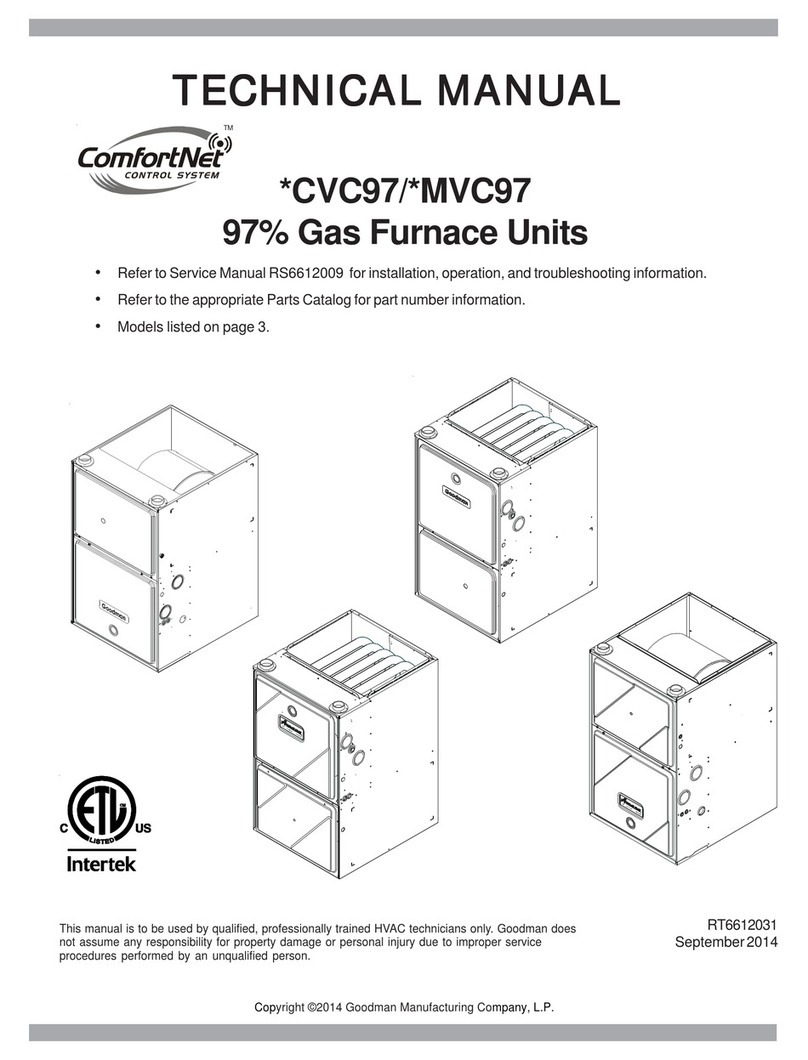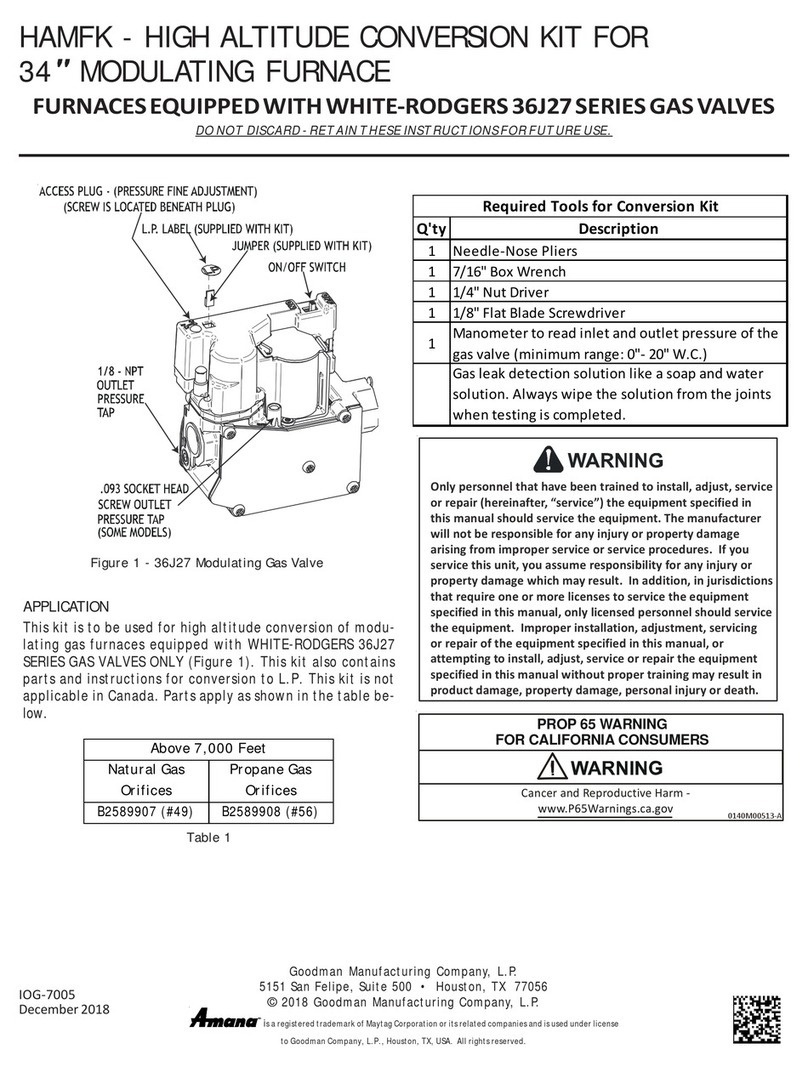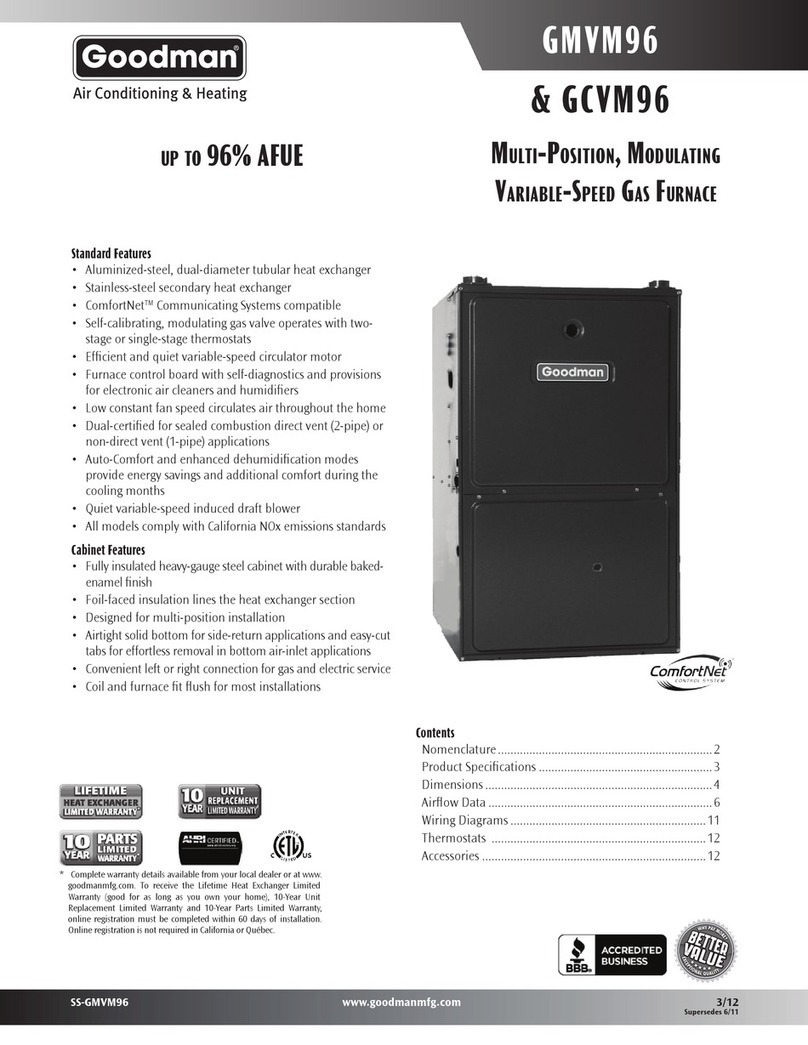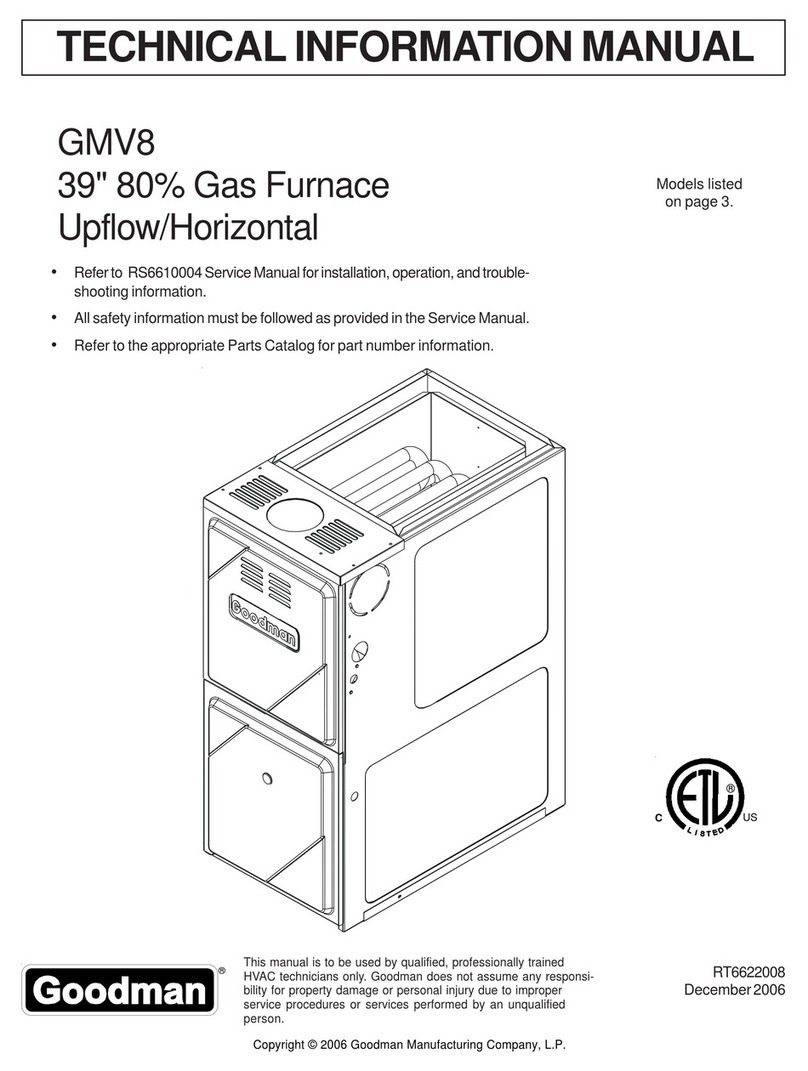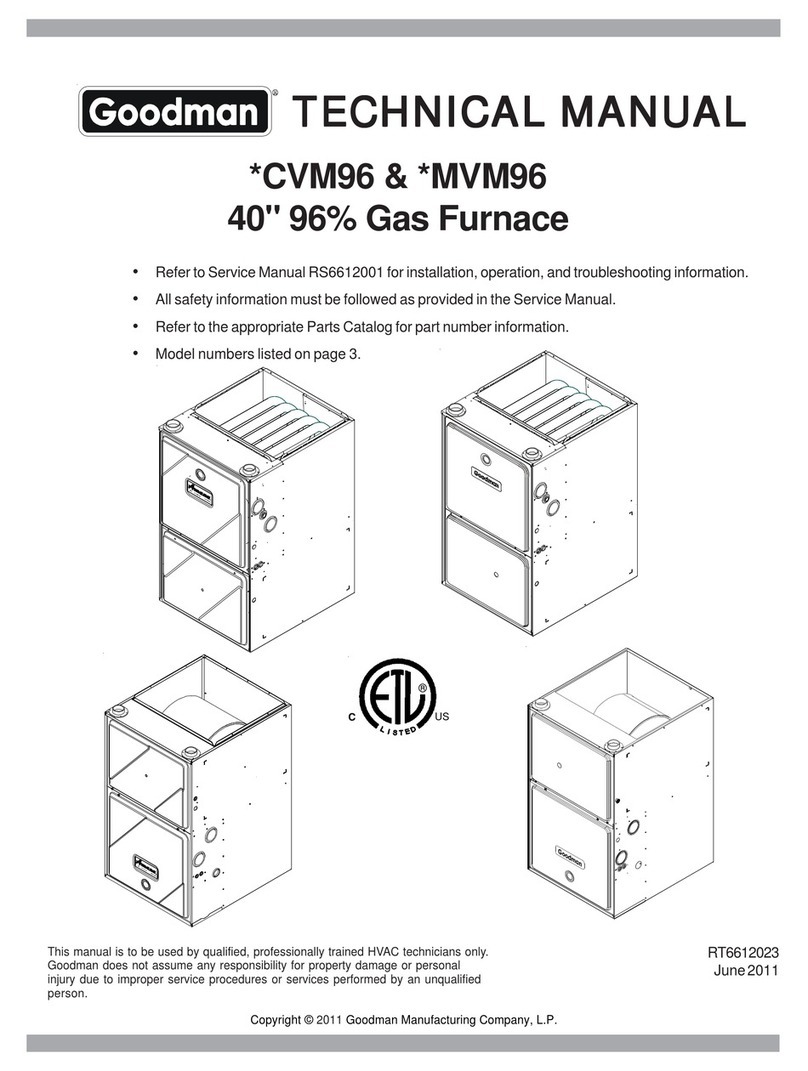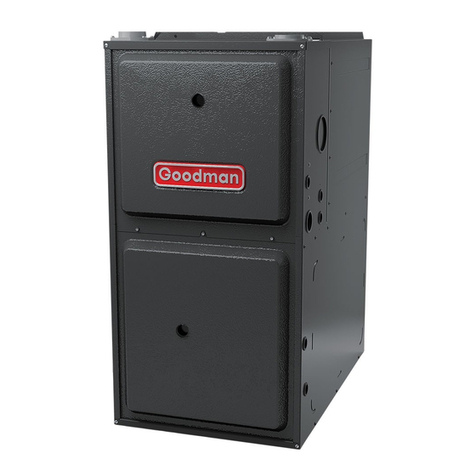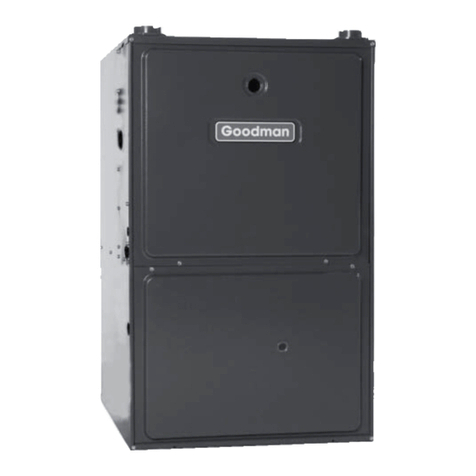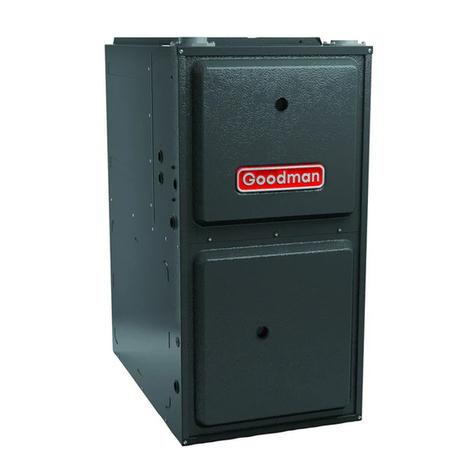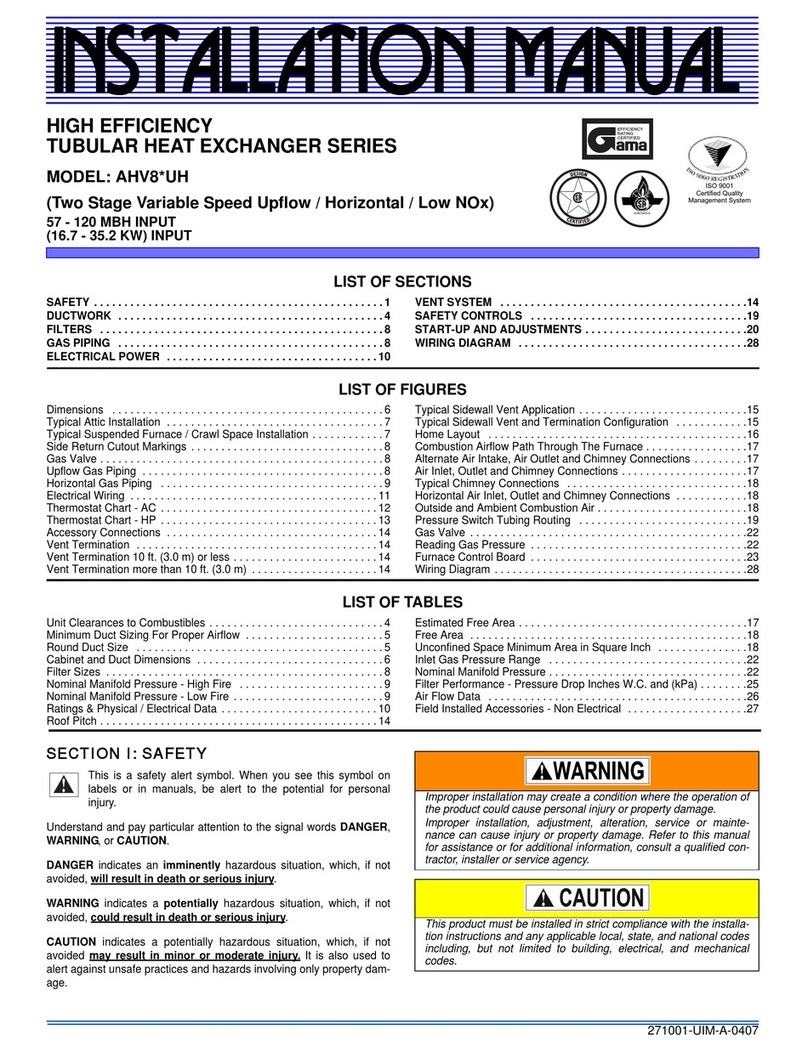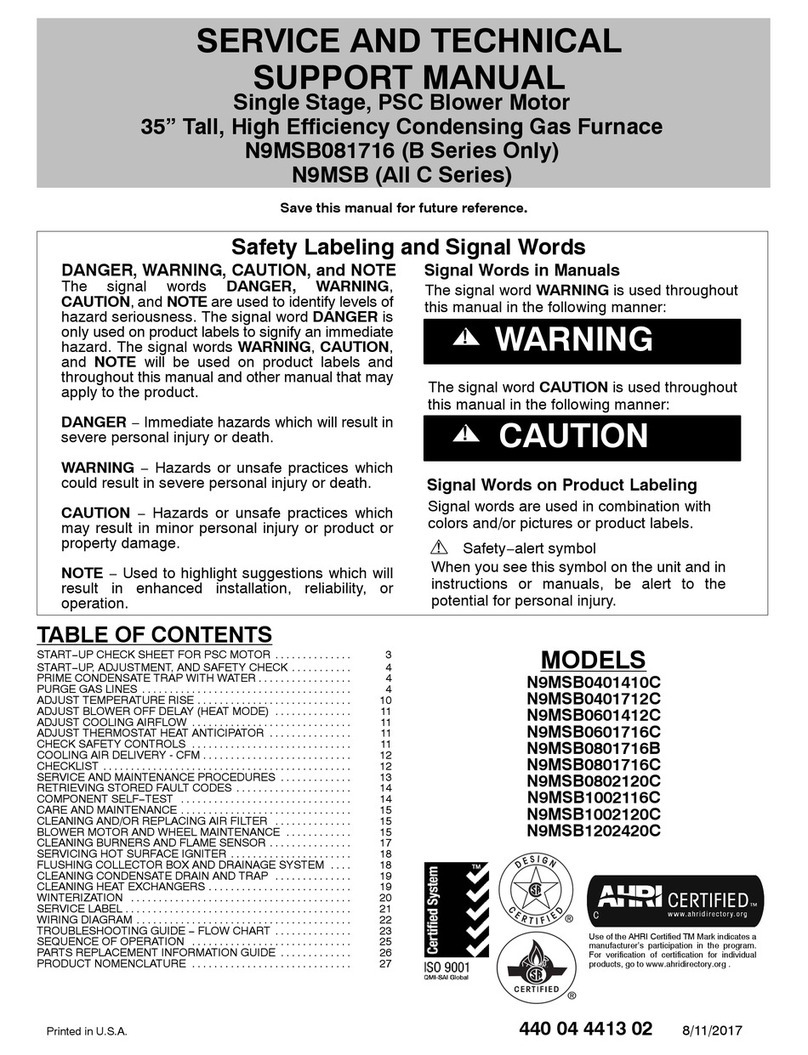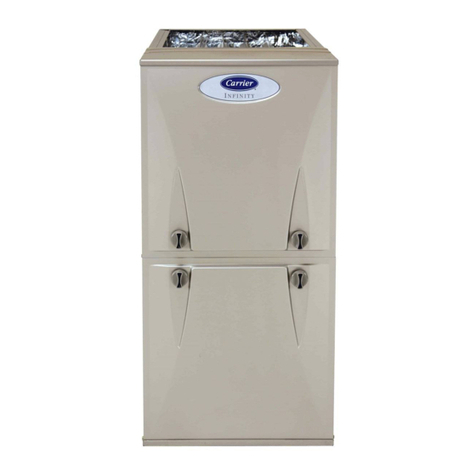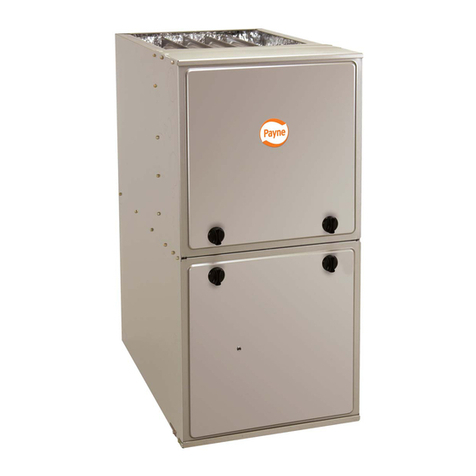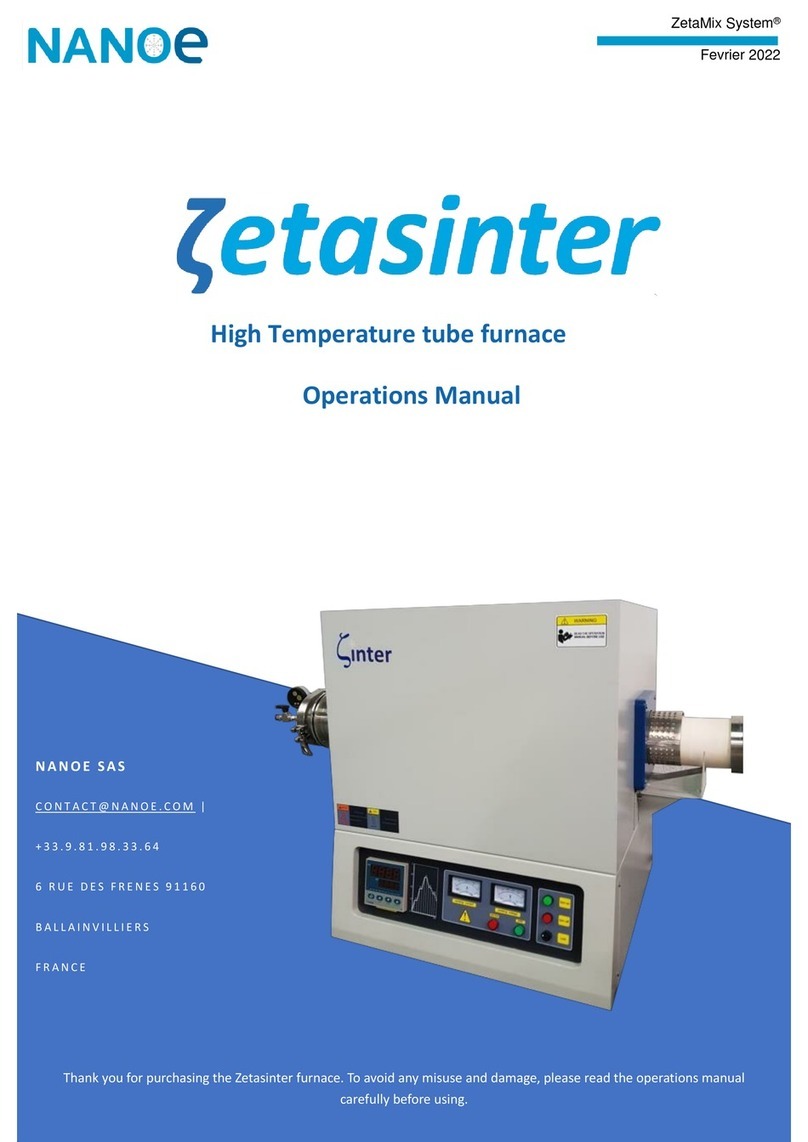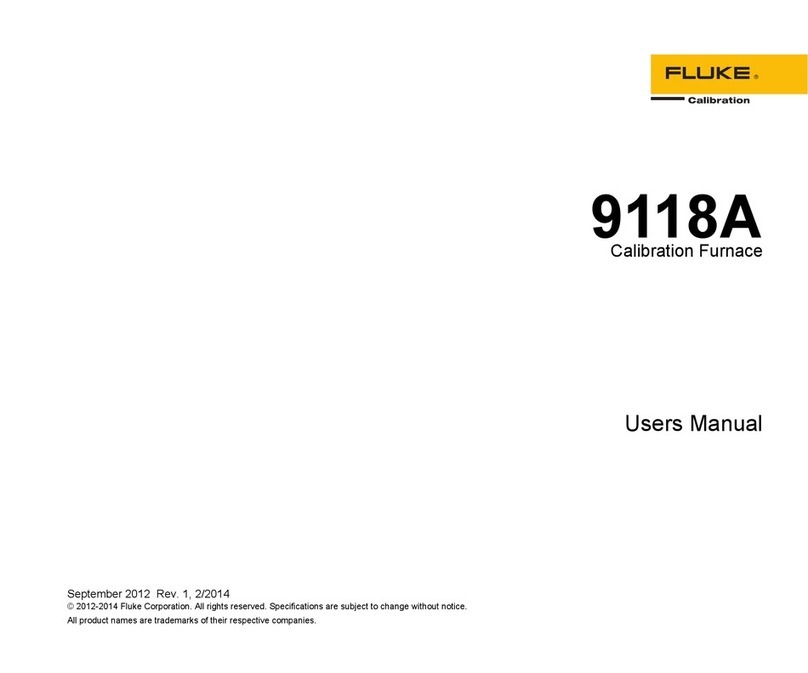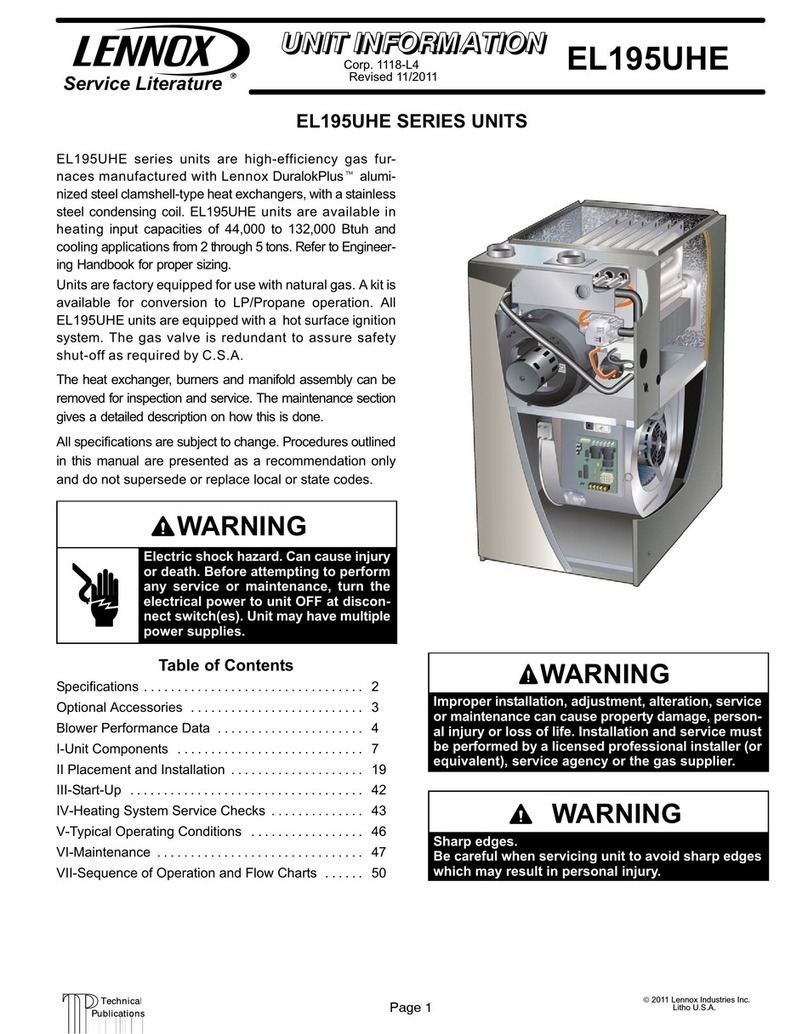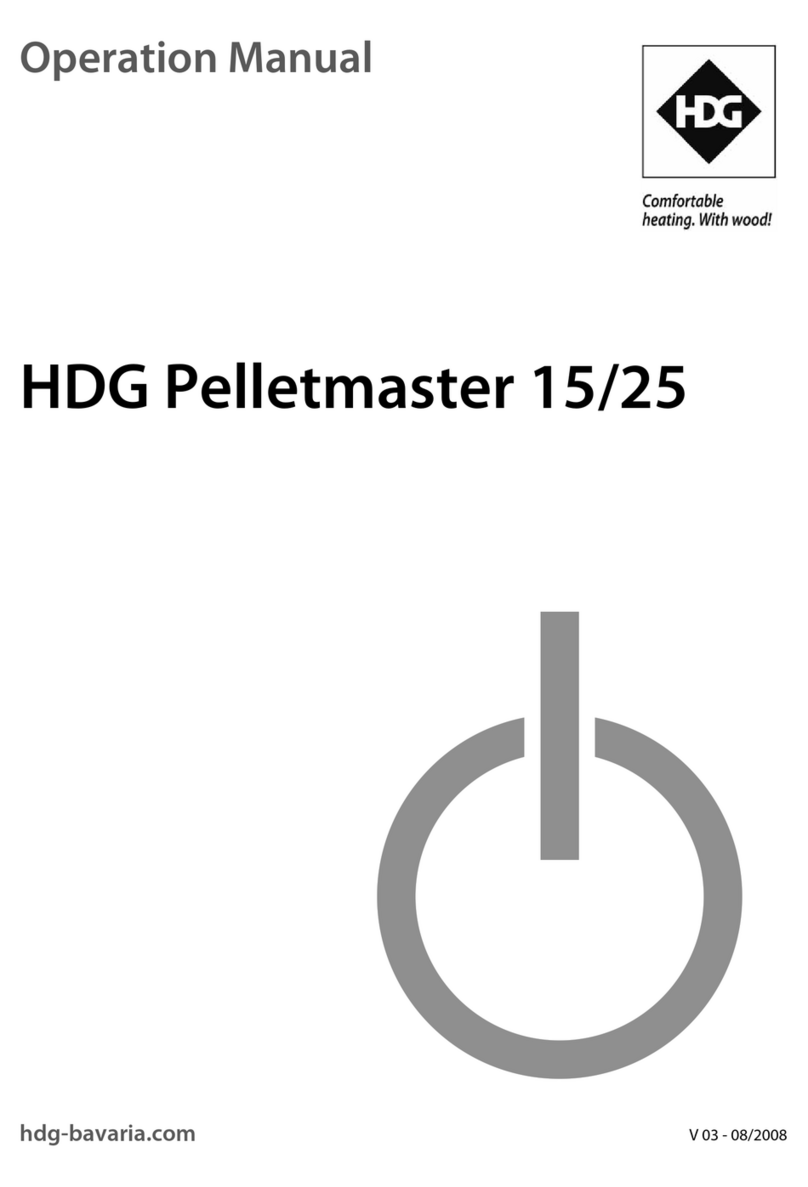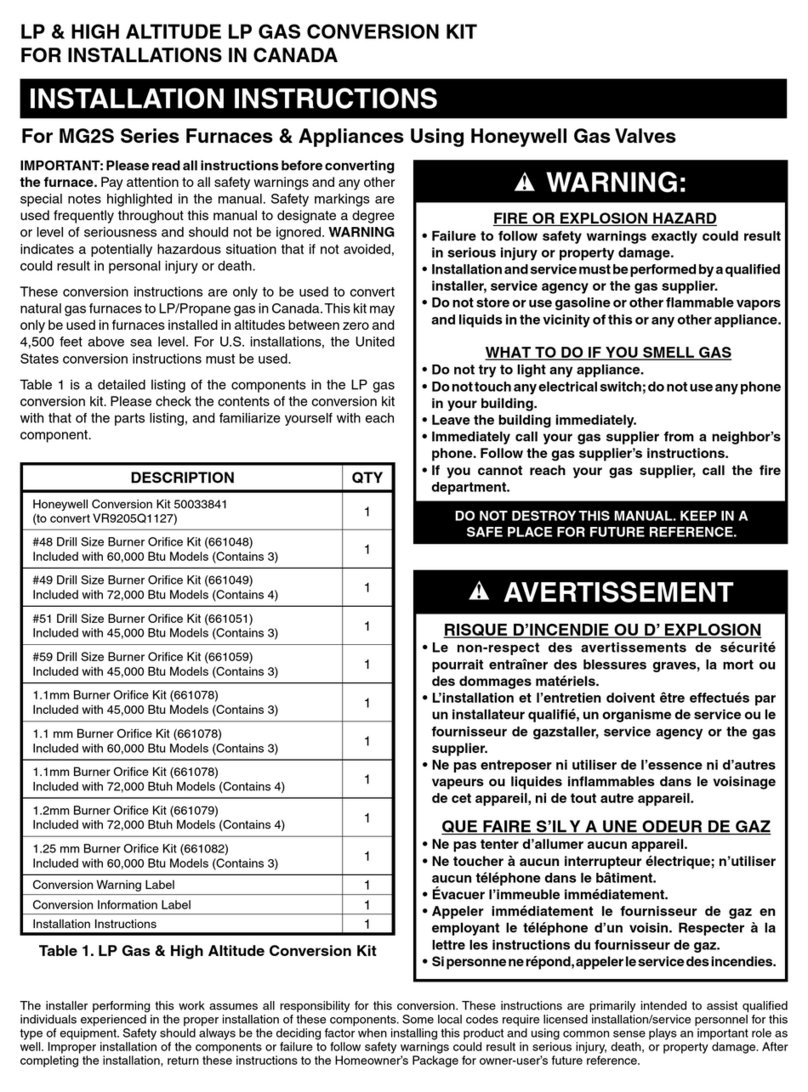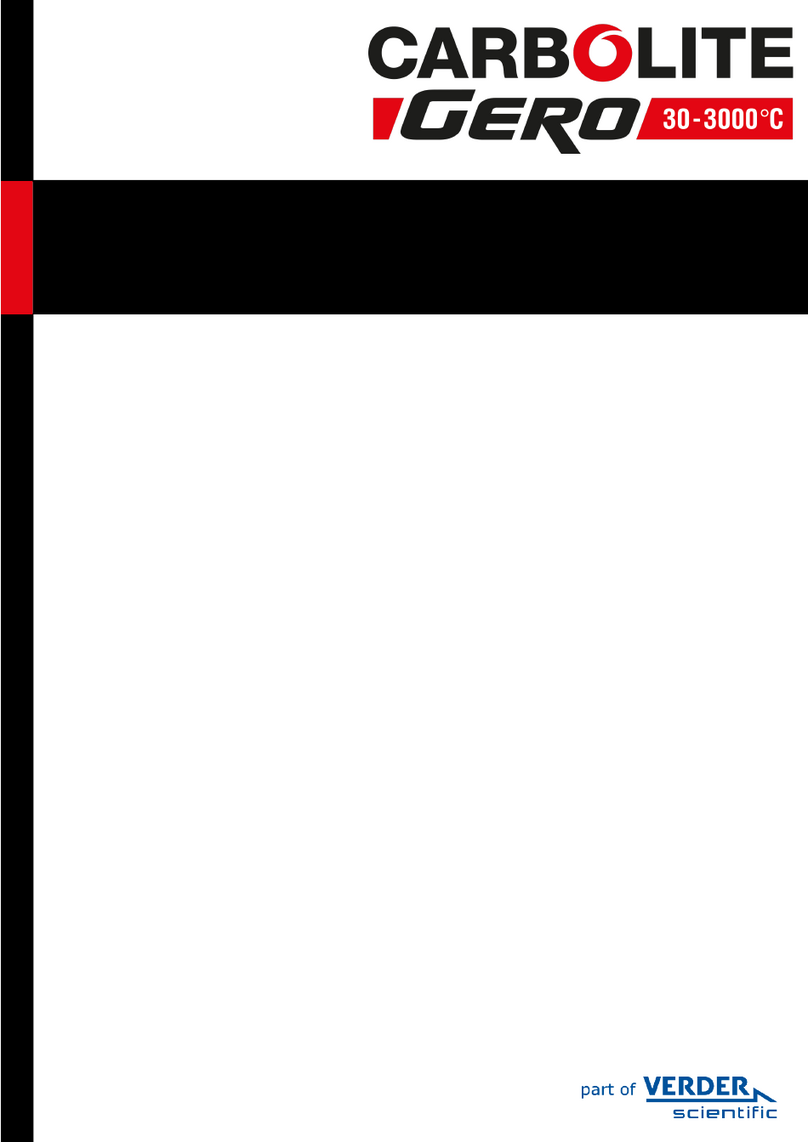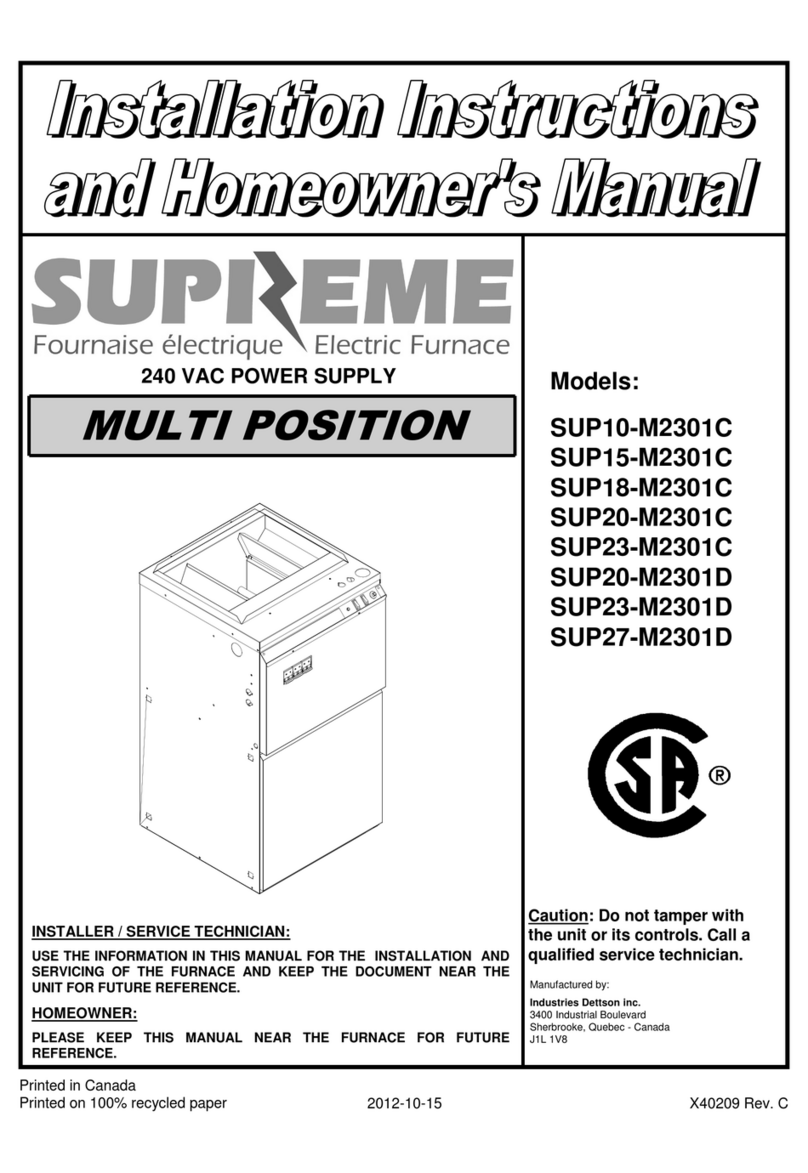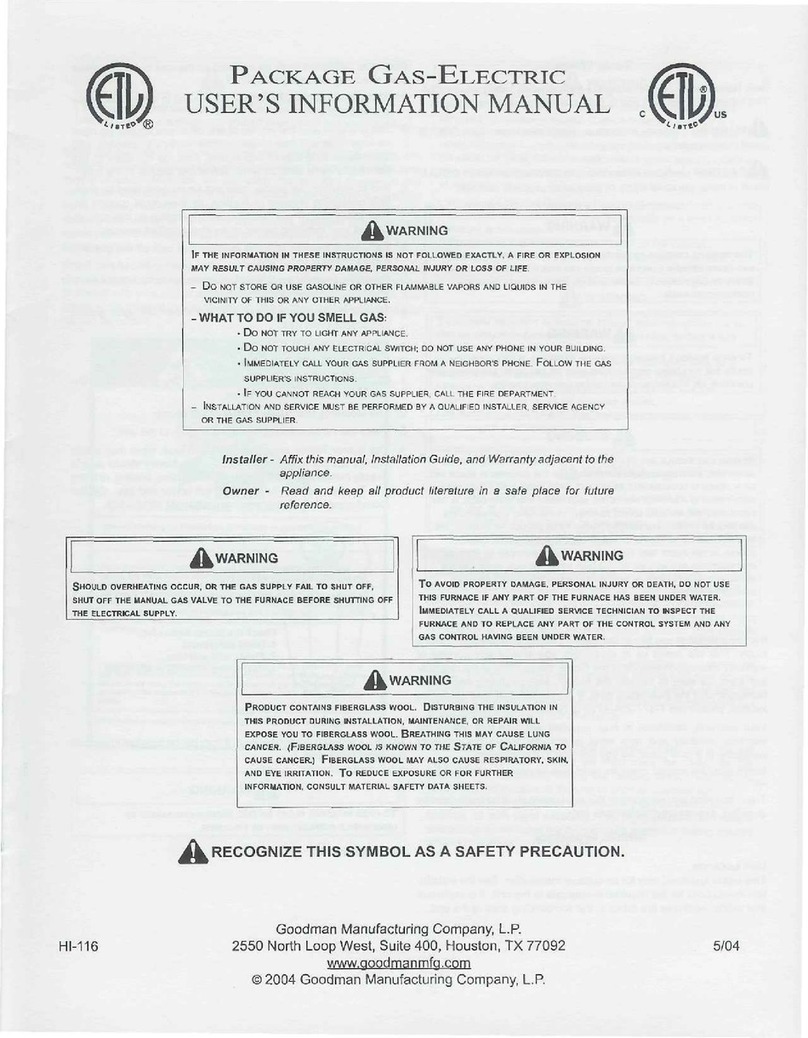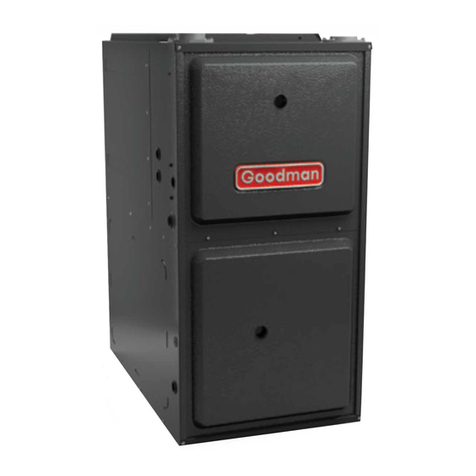
SYSTEM OPERATION
10
Low voltage connections can be made through either
the right or left side panel. Wire routing must not interfere
with circulator blower operation, lter removal, or routine
maintenance.
A 40 V.A. transformer and an integrated electronic control are
built into the furnace to allow use with most cooling equipment.
Consult the wiring diagram, located in the Technical Manual
or on the blower door for further details of 115 Volt and 24
Volt wiring.
The single stage furnace will have a “W” terminal and will use
a single stage thermostat. The following drawing illustrates
the typical eld wiring for a heat only single stage system and
a single stage heating/single stage cooling system. Refer to
the following gures for proper connections to the integrated
control module.
EXTREMELY IMPORTANT: This system does not contain
an O wire input (reversing valve signal). If a heat pump is
installed, the thermostat should be setup for single stage
heat/single stage cool installs ( W= Heat Call and Y = Cool
Call). Setting thermostat for heat pump control will result in
incorrect performance.
1) Connect all necessary thermostat wires to the
thermostat connector on the furnace control (only
available connections on the furnace are R & C for
power, Y for Cooling Calls, W for Heating Calls, G for
Fan Calls, Dehum for Dehumidication Calls. Furnace
will control staging of indoor unit and outdoor unit
automatically based on these inputs).
2) Make sure thermostat is set to single stage heat / single
stage cool mode. When a cool call is given, 24VAC
should be applied to the Y terminal (G will have 24VAC
as well if a G wire is installed). When a heat call is given
24VAC should be applied to the W terminal (G may
have 24VAC as well if a G wire is installed). Even if a
heat pump is installed, do not setup the thermostat in
heat pump mode. Single stage heat / single stage cool
mode is all that is required for all applications. See rest
of manual for any exceptions. Do not setup thermostat
in multi stage mode either, it is not necessary.
3) For communicating 2 stage AC/HP or inverter AC/
HP outdoor units, connect the 1&2 wires between the
indoor and outdoor unit. It is recommended for 2 stage
applications that a separate transformer be installed
in the outdoor unit to provide 24VAC to the outdoor
control. R&C can be used between the indoor and
outdoor in 2 stage AC application but only if there isn’t
already a transformer installed in the outdoor unit.
4) Turn on power to Indoor and Outdoor units
5) Charging outdoor unit: Provide a cooling call (Y or
Y+G) – this initial cooling call after the power is turned
on will run the outdoor unit at full capacity until the call
is removed. Use this mode for charging. If system is
running low stage cooling just cycle power and provide
a cool call again to ensure full capacity cooling.
6) System Testing: Download the CoolCloudHVAC phone
application (see pages 31 and 32)and use it to test all
operations of both indoor and outdoor units.
7) Conrm thermostat heat (W or W+G) and cool (Y
or Y+G) function properly and the system is turning
on in the correct mode. The internal algorithms will
constantly be adjusting the staging times / cooling
capacities based on load changes to the space.
: If a heat pump is installed it will be treated as a
priority heat for a W call. To test gas heat only, without
waitng for the system to stage between the heat pump
and furnace, disconnect communications between the
indoor and outdoor unit before running the heating test.
The furnace contains internal logic to control equipment
staging. An adjustable target runtime is available (range from
1 to 240 minutes) and set through the appropriate system
menu. The system will constantly be adjusting staging in an
eort to satify the thermostat call for cooling (Y only) or heating
(W Only) as close to the set target runtime as possible. See
information below for setting options.
